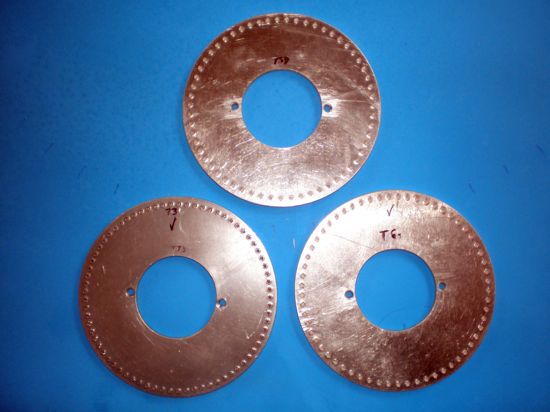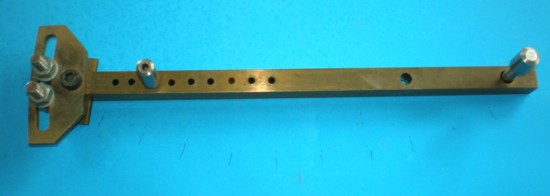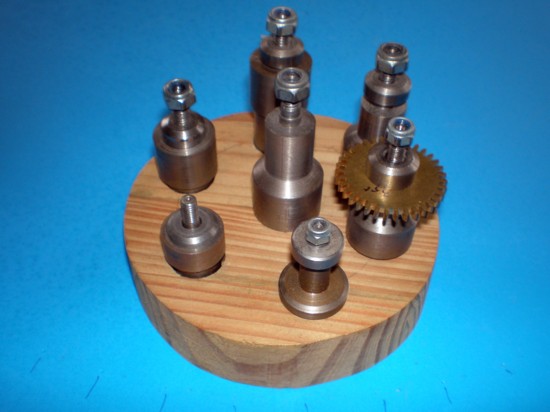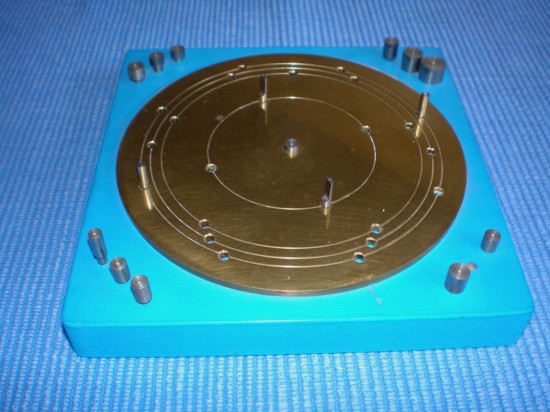After buying a lathe, I had
to learn how to make wheels for the clock. The problem
is that many of the wheels in an Astronomical clock
have uneven teeth numbers, like 61 or 73. These numbers
were not indicated on the dividing head that came with
the lathe. That's why I made my own dividing plates.


With this simple tool I made
the divisions in cardboard, and the punches in
the dividing plates.
Later I bought a better dividing
head, and now I can make every wheel, even wheels (with
some calculation) that go over 100.
Many other tools like mandrels
were made with the lathe.

All the wheels are made from
hard brass, it has more strength and machines better
than half hard brass. I bought some commercial cutters,
but you can also use home made fly cutters.
Much
information I found in the book Wheel and Pinion Cutting
in Horology from J. Malcolm Wild.
The books of John
Wilding were also very useful to make a good start!
Wheel- crossing- marking- out
jig, from the book of
J. Malcolm Wild.

I want to thank C.G.Croce, P. Coleman, P.E.Meulenkamp
(our local clocksmith) and Rob Walrecht, for their
inspiring support, H. Noordmans for his nice calculation
program and book about the Eisinga Planetarium and A.
Lehr for his book: "De Geschiedenis van het Astronomische
Kunstuurwerk" (Dutch)
If possible visit the Eise Eisinga
Planetarium !!

To the main page
|